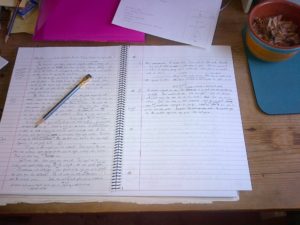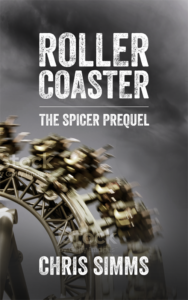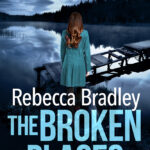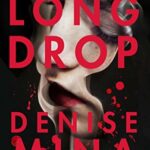It’s back, the writing series that was so popular last year! Tomorrow sees the return of the Revision process series, but today I have crime author, Chris Simms here to talk about his first draft process.
 Chris has worked in airports, nightclubs, post offices and telesales centres. He now lives in Marple with his wife and four children.
Chris has worked in airports, nightclubs, post offices and telesales centres. He now lives in Marple with his wife and four children.
Along with nominations for the Theakston’s Crime Novel of the Year award and Crime Writers’ Association Dagger awards (for his novels and short stories), Chris was selected by Waterstone’s as one of their ‘25 Authors For The Future’.
Sleeping Dogs is the seventh book in the critically acclaimed Detective Inspector Spicer series.
A Price To Pay, audio book, is the second book in a series with a female lead character: Detective Constable Iona Khan of Manchester’s Counter Terrorism Unit.
Reviews for Chris include include these:
‘Chris Simms combines psychological insight with gritty realism to give the reader a genuinely exciting story’ Crime Time Magazine
‘Simms keeps you guessing’ Daily Telegraph
‘An exciting new psychological thriller’ Daily Mail
‘Chris Simms has been quietly building one of the best police procedural series in the country’ Catholic Herald
When you decide to write something new, what is the first thing you do?
Try not to think about what the book’s title will be. It always feels premature, but I can never resist. Sometimes I nail it early on, other times it becomes an annoyingly pleasant distraction.
Do you have a set routine approaching it?
After 16 novels, an approach has emerged – though I try not to become straitjacketed by it. A3 paper for broad brushstroke thoughts on the plot, which soon link into a mindmap, then a rough time-line, then actual sketches of the main characters to help crystallise them in my mind.
 Pen and paper or straight to the keyboard?
Pen and paper or straight to the keyboard?
Pencil and a lined A4 pad – and I only write on the left-hand sides. This leaves the facing sheet free for later additions / edits / notes to self.
How important is research to you?
I have to take care not to let the research carry me away – but it’s so damn enjoyable! Especially when I can see how it will weave itself into the plot. The danger is that it starts to impede or obscure the actual story.
How do you go about researching?
The internet as a starter, but I like to get out of the house and visit places or see people face-to-face. As a result, I’ve ended up in some dodgy situations (Saddleworth Moor, at dusk, with no torch) and I’ve also met senior investigators in organisations like Manchester’s Fire and Rescue service, the RSPCA and the Immigration Service. It always amazes me how generous people are with their time.
How do you store everything; ideas, research, images that catch your eye?
Stuff soon accumulates in the form of print-outs, newspaper snippings, leaflets and post-it notes. So a big plastic folder acts as a collecting place. As I get further into the plot, I’m sad enough to start a proper, indexed, A4 file. It’s geeky, but it saves so much time double-checking material at the editing stage.
Tell us how that first draft takes shape?
It’s a simple progression of my A3 mind map. I’ll form 3 or 4 sentence summaries for about 5 chapters, then start writing. Once they’re done, I repeat the process. Most of my novels come in at about 40 chapters long.
Are there any rituals you have to do or items you must have with you while writing that draft?
I write with a Blackwing pencil – ‘half the pressure, twice the speed’ according to the lettering down their sides. This I sharpen with a posh, two-hole, sharpener. The shavings are carefully collected and end up in a wax-stoppered test tube as a slightly odd memento of the whole bizarre process that is writing a book.
Does the outside world exist or are you lost to us for a period of time as the magic works?
Totally lost. I write in an outside shed with a little heater and have been nearly given a heart-attack by family members suddenly opening the door without warning. They now all know to knock gently and open slowly…
What does your workspace look like?
Cramped. Dickensian. Modern technology-free.
Edit as you go or just keep getting words out?
As I go, using that blank facing page!
I see many writers counting words in a day. Word counter or other method of keeping track of progression?
Six sides of A4 equal about 3,000 words. I’m happy with that as a daily target, though sometimes I hit ten sides.
So, that first draft is down. Roughly how long did it take? And what shape is it in?
About six months. But another five or six versions lie ahead. Usually refinements rather than rebuilds, thankfully.
In what format do you like to read it through, ereader, paper or the computer screen?
Paper: it gives me a sense of how the actual book will be. Plus, a lot of studies suggest your brain skitters across information if it’s read from a screen.
What happens now that first draft is done?
That’ll be the pub, while the first dread thoughts of typing up 90,000 words ruin my pint…
You can find Chris at his Readers club | Facebook | Amazon
Roller Coaster
 A fun night out. A fatal attack. A fight for justice.
A fun night out. A fatal attack. A fight for justice.
Discover the dramatic event that spurred Jon Spicer into joining the police.
The distinctive storytelling skills of Simms run through this fast-moving account of one man’s dogged pursuit for justice.
Exclusive to members of Chris Simms’ Readers Club.
Read the rest of the First Draft series HERE.



So glad to see this feature is back! Thanks, both, for an interesting look at how people go about doing first drafts. And the pub isn’t a bad place at all to mark the end of writing that first draft…